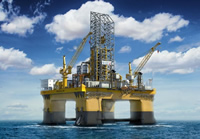The Job and What's Involved
Technical illustrators, also known as scientific illustrators, often work alongside technical authors. Technical illustrators usually specialise in preparing detailed drawings to help people to understand complex scientific or technical information.
Their illustrations are used in textbooks, reference books, instruction manuals and technical sales brochures. They may also produce images for multimedia software, film and television, website's and architectural visualisations.
Technical illustrators usually specialise in one field such as medical, botanical or engineering. Their duties usually involve:
- Discussing requirements, and agreeing the brief and contract with the client.
- Talking to designers, technical authors and engineers to gain a better understanding of the product.
- Studying the item - it could be the controls of a car, computer parts, a new electrical product or part of the human body - to decide how best to illustrate it.
- Using computer graphics or perhaps drawing, painting or photography to produce the illustration.
- Consulting with clients, gaining approval at all stages of development and making changes as required until the illustration meets their needs.
Employed Technical illustrators usually work office hours, Monday to Friday. Most technical illustrators work at home or in a studio, but some travel to sites may be required.
Starting salaries for qualified technical illustrators tend to be in the region of £20,000 to £25,000 a year. Experienced and specialist illustrators working in the scientific and medical fields can earn up to £40,000 a year. Some may earn much more than this.
Self-employed technical illustrators need to be proactive in finding work. This includes promoting themselves to employers and keeping their portfolio up to date. Some technical illustrators use agents to do this work. They also need to keep their own records and accounts.
Getting Started with this Career Choice
Competition for permanent jobs is high.
Employers or organisations that commission freelance technical illustrators include scientific or technical publishers, government departments, advertising agencies and broadcasting agencies, multimedia and web publishers, as well as architects, engineering firms and manufacturers.
Many technical illustrators are self employed or work freelance.
It is important to have a high level of illustration ability, an extensive portfolio of quality work and self-promotional skills to obtain work.
Education and Training
Most technical illustrators have an HND or degree in graphic design, illustration or art and design.
Foundation degrees and HND's - applicants usually need a minimum of one A level, including an art and design subject, a relevant BTEC national award or BTEC Diploma in Foundation Studies (Art and Design). Courses usually last two years full time.
Degree courses - entrants usually need at least two A levels including an art and design subject, plus five GCSE's (A*-C), or equivalent. Many colleges and universities also require the BTEC Diploma in Foundation Studies (Art and Design). Most full-time courses last three years.
Postgraduate degrees and diplomas - Most courses last one year full time.
Applications should check entry requirements with individual colleges and universities. A portfolio of art and design work is usually expected. Some colleges offer courses in portfolio preparation. Occasionally, an applicant with an outstanding portfolio may be accepted without the usual minimum entry qualifications.
Some courses provide options to specialise in technical illustration.
A Few More Exams You Might Need
Technical illustration is open to any illustrator with a good understanding of science or technology.
Blackpool and The Fylde College BA (Hons) degree in illustration covers technical information illustration and scientific and natural history illustration. The course lasts three years full time.
Featured Job Guide - Oil Drilling Roustabout

Oil Drilling Roustabouts and Roughnecks work as part of a small team on offshore oil or gas drilling rigs or production platforms. Roustabouts do unskilled manual labouring jobs on rigs and platforms, and Roughneck is a promotion from roustabout.
Roustabouts do basic tasks to help keep the rig and platform working efficiently and Roughnecks do practical tasks involved in the drilling operation, under the supervision of the driller.
________________________________________________________________________________
Skills and Personal Qualities Needed
Technical illustrators need:
- Excellent drawing and IT skills.
- An eye for detail and design.
- Precise, accurate and clear presentation skills.
- A strong interest in, and an understanding of, science and technology.
Your Long Term Prospects
Success for a freelance illustrator depends on building up a reputation and a steady flow of work.
There may be opportunities for technical illustrators in full-time employment to become art directors, design managers or heads of department.
Get Further Information
The Association of Illustrators (AOI),
2nd Floor, Back Building,
150 Curtain Road, London EC2A 3AT
Tel: 020 7613 4328
Website: www.theaoi.com
Blackpool and The Fylde College,
Ashfield Road, Bispham,
Blackpool, Lancashire FY2 0HB
Tel: 01253 504343
Website: www.blackpool.ac.uk
Institute of Medical Illustrators,
29 Arboretum Street, Nottingham NG1 4JA
Tel: 0121 333 8492
Website: www.imi.org.uk
Institute of Scientific and Technical
Communicators (ISTC), Airport House,
Purley Way, Croydon, Surrey CR0 0XZ
Tel: 020 8253 4506
Website: www.istc.org.uk
Other Related Jobs
- Advertising Art Director
- Animator
- Cartoonist
- Fine Artist
- Graphic Designer
- Interactive Media Designer
- Medical Illustrator
- Photographer